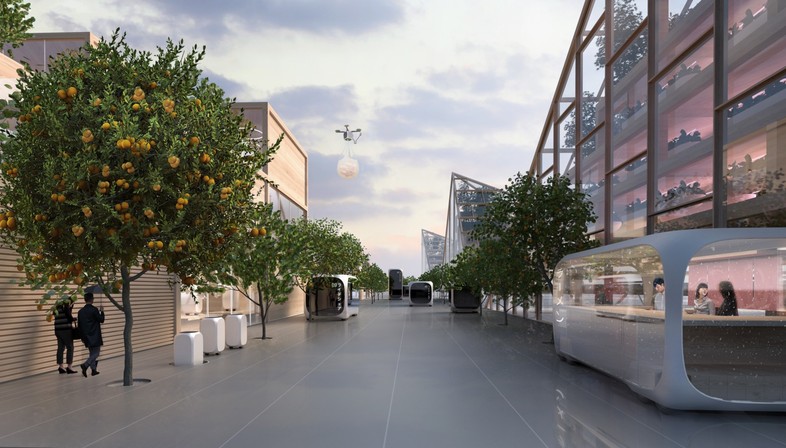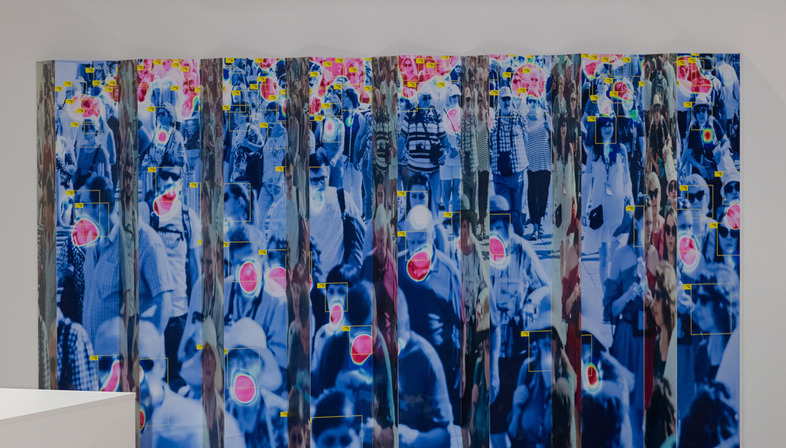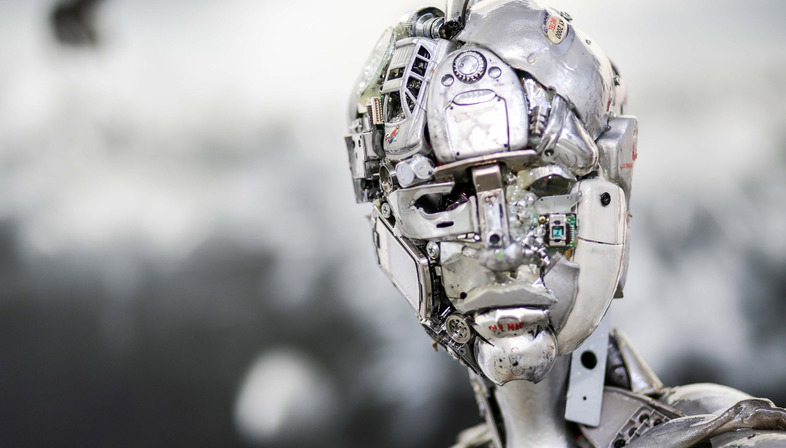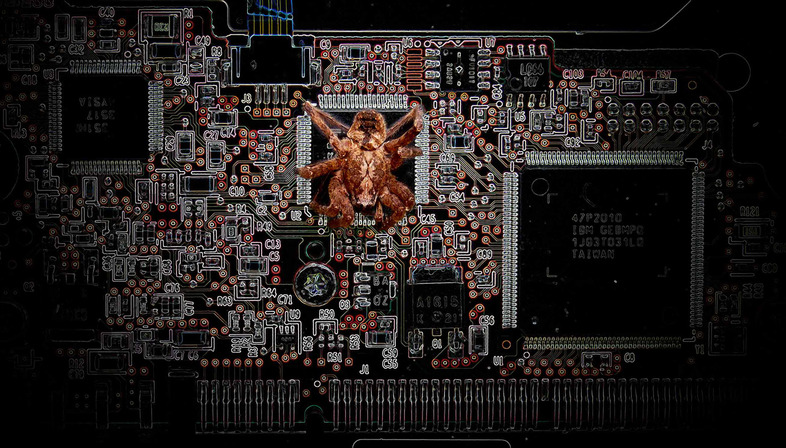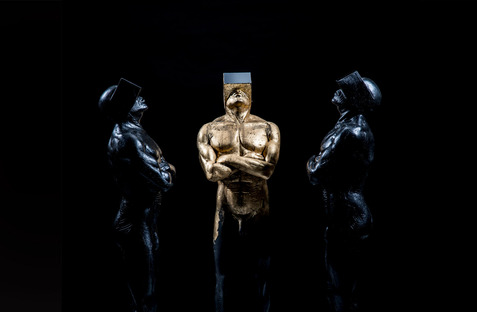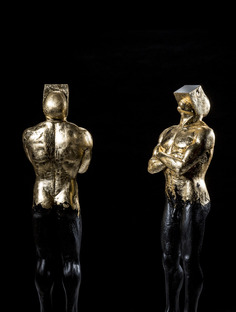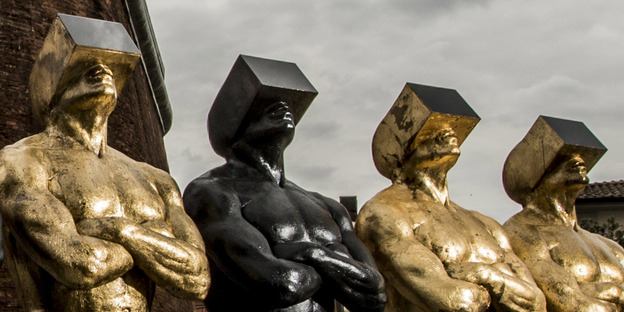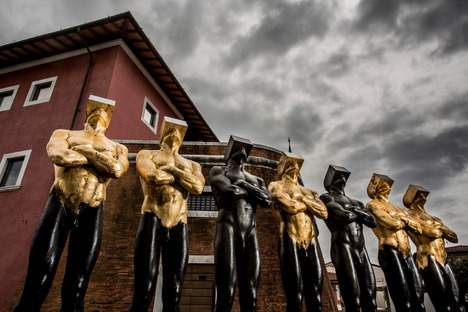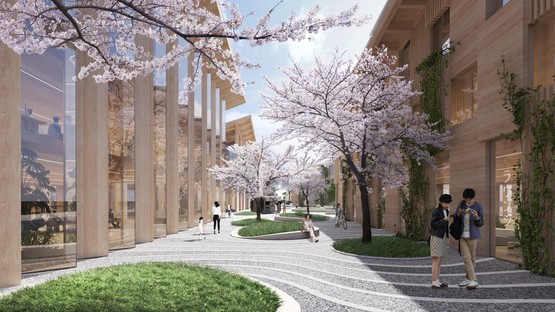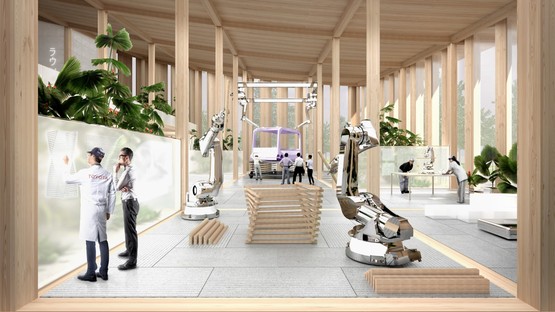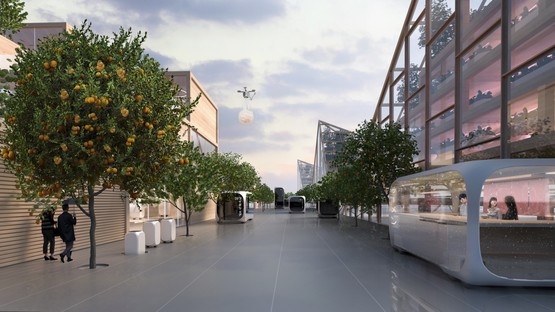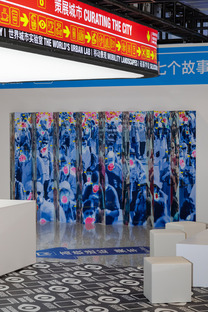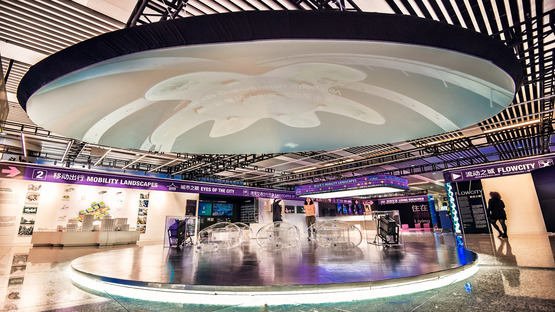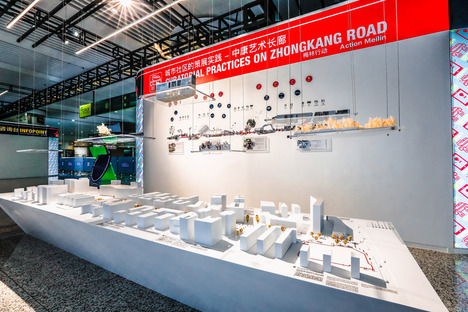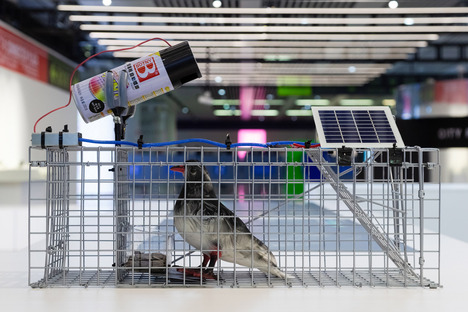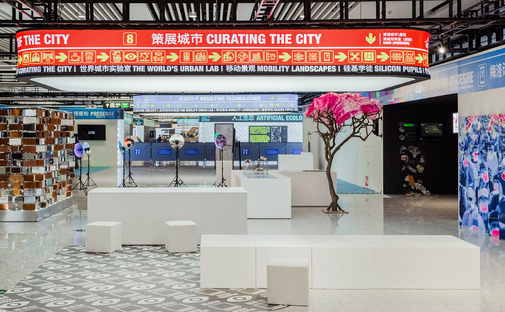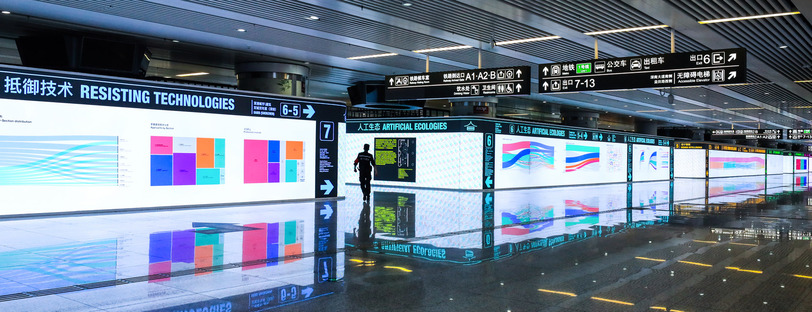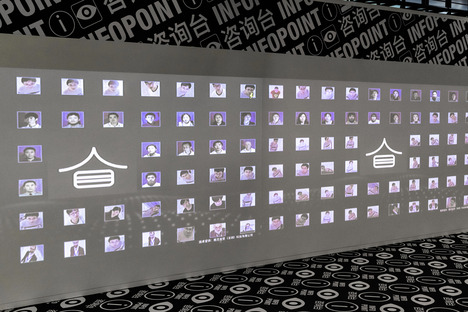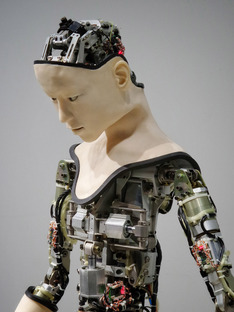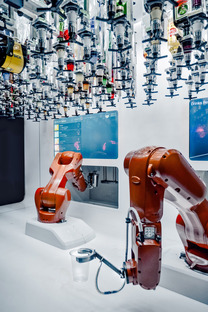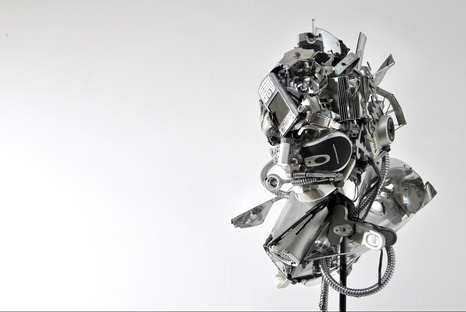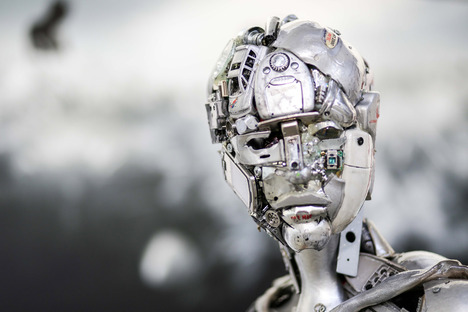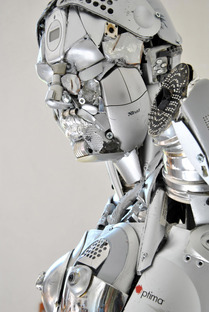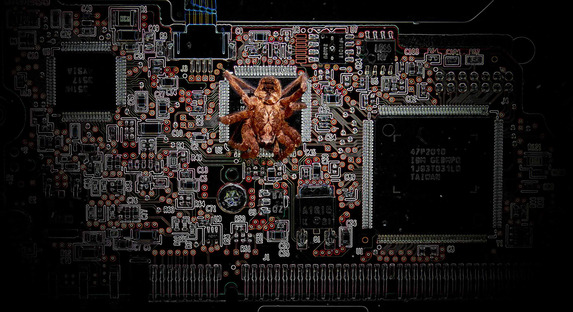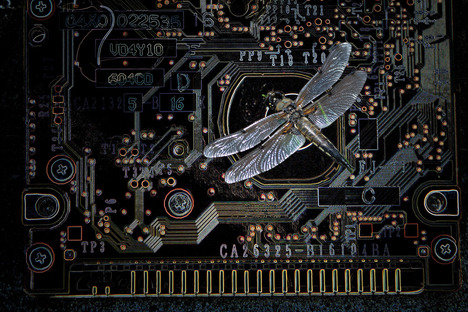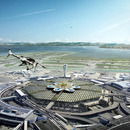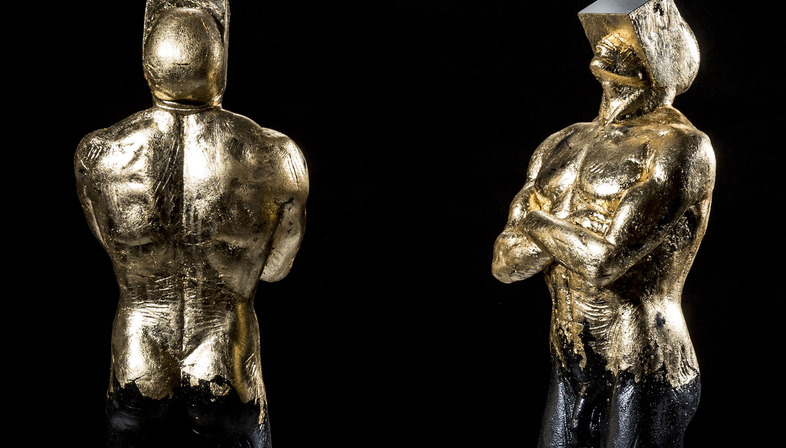
I read about a city of the future on which the well-known car manufacturer, Toyota, has been working for months in collaboration with the architect Bjarke Ingels, a kind of experimental laboratory to test new technologies dedicated to mobility, robotics, artificial intelligence and renewable energy. "A fully connected ecosystem powered by hydrogen fuel cells”.The intent behind the project is certainly very noble, especially by a company belonging to the automotive sector, the effort to make the most innovative researches useful for the community. It is a valuable attempt and there are many points that deserve to be praised, such as helping individual and collective mobility to satisfy the various necessities at lower prices and with more rational usage, providing the assistance that should be guaranteed to different age groups. Nothing to object about offering healthier contexts, but a perplexity arises from the name chosen for the project: 'Woven City' and from the words of the architect, who announces: “Woven City is designed to allow technology to strengthen the public realm as a meeting place and to use connectivity to power human connectivity... in an age when technology - social media and online retail - is replacing and eliminating our traditional physical meeting places”, making us “increasingly more isolated than ever”.
It is a statement that I hope can be realized, since technology has to overcome another technology risking to destroy relationships between people. In an era when everything is done to satisfy productivity and purchase, by studying and testing what people want and then tailoring a marketing-oriented advertisement on their demands, will be eliminated even the commercial approach able to affect human connections?
To me, it does not seem so obvious but there are those who are firmly convinced that can be achieved successful results and try with great enthusiasm. Certainly, as the architect claims, the prototype city, which will inaugurate a series of future reproductions, forged on its model, has been planned with many meeting points, "a multitude of different econiches, created by a pattern of porous 3X3 city blocks arranged in groups around central courtyards, connected to each other by the streets and pedestrianized linear parks”. Everything has been organized to encourage cohesion among the 2000 fellow citizens who have been chosen to face this experience, and I wonder if the architectural resources alone will be sufficient to stimulate the desire of people to interact and gather together. Urban and architectural proposals can provoke participation and inclusive behaviors but they certainly do not have the strength to make us decide whether to lead a secluded or group life, at least as a selective choice in the different phases of our existence.
So, how can this 'woven globality', which we have spoken about, be reached? Which expedient will they have to recur to? Maybe to an AI technology that, keeping constantly under control with data and sensors not only buildings and vehicles but also people, perhaps will transmit inputs that will trigger the desire to share and to be more united among individuals? There are researches that have shown that sophisticated biotechnologies will be able to manipulate our emotions and consequently our behaviors. I don't even want to think that Artificial Intelligence could invade our most intimate privacy. Nullifying our sense of reality does not seem an impossible feat thanks to the perfection achieved by digital editing, capable of generating apparently real images and convincingly changing the appearance of people. And if you can easily persuade us that a computer-shaped world is not only virtual, who can assure that we will not be led to see what someone else intends to make us believe?
The levels obtained in research and in the application of the technique are very high just as extraordinary are certain advantages that they bring us. They will never cease to surprise us, if we will be able to use them in a manner to avoid conformity and not to suffocate our individuality that, for better or for worse, distinguishes us. In 'Black Mirror', a television series set in the near future, modern society is examined, dealing in particular with the unexpected consequences caused by new technologies. The episodes take place in a dystopian world that is scrupulously and meticulously re-proposed as authentic. When people are tested, there is a general tendency to lack self-determination, due to the desire to conform and behave according to the best standards established by the machines.
If we adapt to the will of a mind that has control over us, where have our freedom to decide and our autonomy gone? The new sharing data scenarios require us to ask ourselves if there is an ethics that regulates their use. UABB 2019, the Biennale of Architecture and Urban planning in Shenzhen and Hong Kong, has dedicated this latest edition 'Urban Interactions', to the fate that lies ahead in an increasingly mediated urban context: to the theme of technological evolution and its interference in daily life, promising to analyze under a multidisciplinary profile how this advent of science penetrates and conditions our existence. An interesting topic, especially if, ignoring the innovative impact on the architectural sector, it is approached from a sociological point of view. The more we try to facilitate our lives by recurring to technical means that speed up and simplify our every need, the more we succumb to an automated mechanism that deprives us, with increasingly invasive interference of our decision-making autonomy. Computers are becoming practically omnipresent and their competence is extending to fields not covered by programming. Proceeding at this rate, we could risk becoming a tools of a system that has been created to be at our service.
Technologies, according to the historian Melvin Kranzberg, are "neither good nor bad, but neither neutral" and this statement deserves some reflection. The facial recognition, for example, which can have surely an advantage from the point of view of the security of a state, a city and a community, if used without a moral sense, with an intentional improper use will trespass, ending with violating everyone's privacy, monitoring also what we would not like to be diligently recorded and stored in a data archive. It may happen, as it has already occurred, that those who manage data control influence the performance and the result of certain economic and political operations.
If the surveillance that was supposed to guarantee security turns into something very invasive, which we cannot get rid of, putting aside the help that technology provides, facilitating practical problems, such as traffic, health, how to prevent and deal with natural disasters, we could rather expect, a sort of replica of the famous 'sharp eyes', a program that in China films and monitors the movements of every inhabitants in more than fifty cities and better be ready to a not easy emergency to recover that autonomy so dear to us. “When the city has eyes to see, it will become the stuff of nightmares. The panopticon prophecy will come to life. Democracy will die”, someone warns us! It is our responsibility to adopt an attitude of awareness towards the digital medium, trying to understand where it will lead us, to prevent and stem unwanted consequences.
Even when, with certain rhetoric about the Smart City of the future, are presented idyllic and somewhat mellifluous scenarios, that highlight overabundance of green, free time and connections, we should evaluate with a critical spirit these portraits that often evoke bucolic atmospheres of perfect harmony, and we should try to understand if everything will really work perfectly as they envisage. The contexts that are depicted in these renders and artistic representations have nothing to do with the futuristic aggressiveness normally revealed by famous creations of science fiction artists, but rather it seems that they want to convince us that we will live in a sort of pastoral world, where there will be only nature and crops in every corner of our homes and in the city, group activities, moments of relaxation and great interactivity. Sharing, a term that speaks to us about conviviality and convenience is the common denominator, at the basis of this new ideal urban model, in which technology emanates only a sense of well-being. However, there are those who raise doubts and warn us of possible risks and negative consequences that can derive from this system that guarantees to us good quality of life and inclusion for all: a significant challenge easier to promise verbally than to realize effectively. People with low income will benefit in part from this shared economy but, with regard to this famous inclusion which should be extended without discrimination, if, for example, we focus on the financial sector, how can we eliminate the barrier, that, caused by the digital medium, packaged and distributed by market platforms, denies access to those who do not have a credit card or a bank account on the verge of approval?
The so-called shared economy, according to some experts, would be nothing but another face of the marketing laws which, under the pretext of supporting a sense of frugality, would encourage interests not really for everyone, risking to feed the monopoly of a few large online companies. Large firms promise to meet the economic needs of a high percentage of the population, with the sole aim of enriching their funds.
There are other forms of sharing, foreseen in this Intelligent City, which are born with a decidedly very coherent intent and purpose, in consideration of the lack of spaces that is increasingly nagging us, air pollution and highly at risk environmental sustainability, but that, with the passing of time and experience, show not to always perform perfectly as predicted. As in the case of the working environment, it has been proven by sociologists that not all love collaborative space, whose exemplary efficiency is normally magnified, as able to offer privacy and meeting space, helping to forge human relationships and foster the creation of a community. No complaints on the economic benefits that a shared container yields especially to young people at the beginning of their business, but it is also necessary to note that, when some opt for this solution, it is not always their preferred choice. Certain polls show that those who have been driven by necessity often feel a sense of frustration for not being able to have their own space, where they could be free to manage their work more independently and where to receive customers with that kind of autonomy not allowed by the presence of others.
Coming back to the city that the architects declare will be soon realized, promising egalitarian inclusiveness, someone of completely different opinion alerts us that we are living unfortunately in an era of ‘staggering inequality’, which is monopolizing the future and that technology would be the main cause. There are universities that have decided to dedicate themselves to the study of tech ethics, to help those who are part of minorities and certain working classes to achieve more equitable conditions. But the students, who mainly deal with this research against social injustices, even if they present themselves as champions of inclusiveness and common good, belong in the majority of cases to elitist universities that push to achieve success as a myth, with aggressiveness and at any cost. Those who work to create programs to eliminate inequalities are, ironically, part of that very portion of inequality that should be eliminated. Digital technologies are used to promote collaborative dynamics based on mutual solidarity, but the paradox is that there will always be a winner who will determine the game of the world.
We ideally aspire to a horizontal, collaborative economy, we have many good intentions, animated by generosity and sensitivity towards the suffering of others but in reality, dominated by the religion of 'win-winism', we try to fill roles of power, supremacy in our social, economic and political world. This digital agenda, which will not always be managed by us, could lead us to live, as someone has said with great acumen, "prisoners of the dream of harmony without utopia”.
Virginia Cucchi
Credits:
Artist: Emanuele Giannelli
"Korf 17" 2017, resin o bronze, dim. human scale
Images courtesy of Emanuele Giannelli, by Gabriele Ancillotti [the cover, images from 01-04]
http://www.emanuelegiannelli.it
Artist: Dario Tironi
"Testa incasinata” 2017, mixed-media assembly, resin, Dim. 35x102x33 cm Private collection (image 13)
"Untitled" 2014 mixed-media assembly, cm 132x40x30 (image 14)
"Senza titolo" 2015 mixed-media assembly, resin 120 x 70 x 55 cm (image 18)
"Istinti rimossi(ragno)" cm 56x100x10, print on policarbonate retroilluminato, 2009 (image 20)
"Istinti rimossi(libellula)" cm 30x45x10, print on policarbonate retroilluminato, 2009 (image 21)
https://dariotironi.com/
Toyota Woven City
Location: Susono City, Shizuoka, Japan
BIG | Bjarke Ingels Group
https://big.dk
Client: Toyota Motor Corporation + Kaleidoscope Creative
Images courtesy of BIG Bjarke Ingels Group [images from 05-07]
UABB 2019
Biennale of Architecture and Urban planning in Shenzhen and Hong Kong
Eyes of the City
http://eyesofthecity.net/
Images courtesy of Eye of the City [images 8(MVRDV + Airbus), 10-12 (UABB), 9,15, 17 (Prospekt)]
Unsplah
Image 16 of Franck V, and 19 of David Leveque










